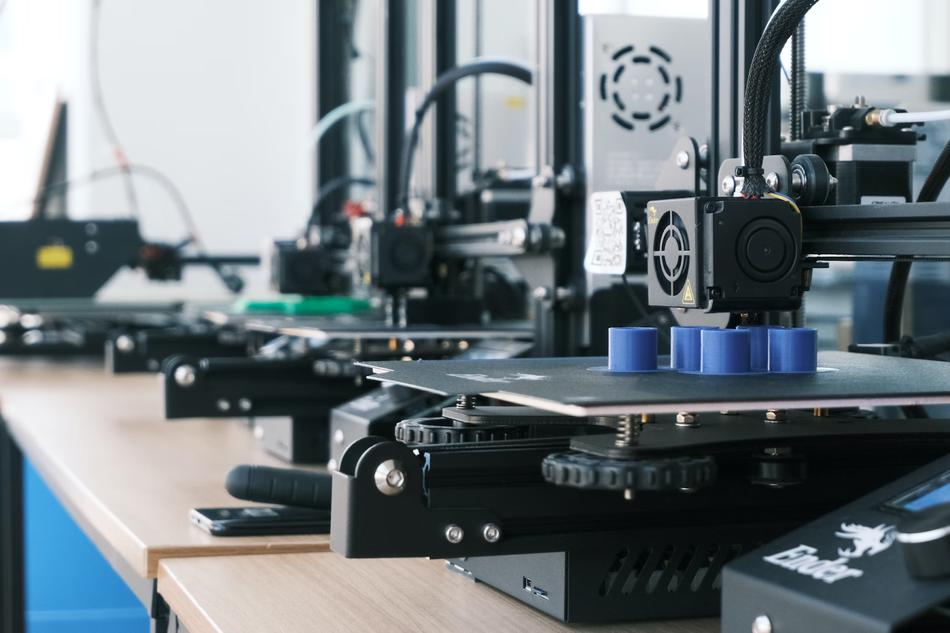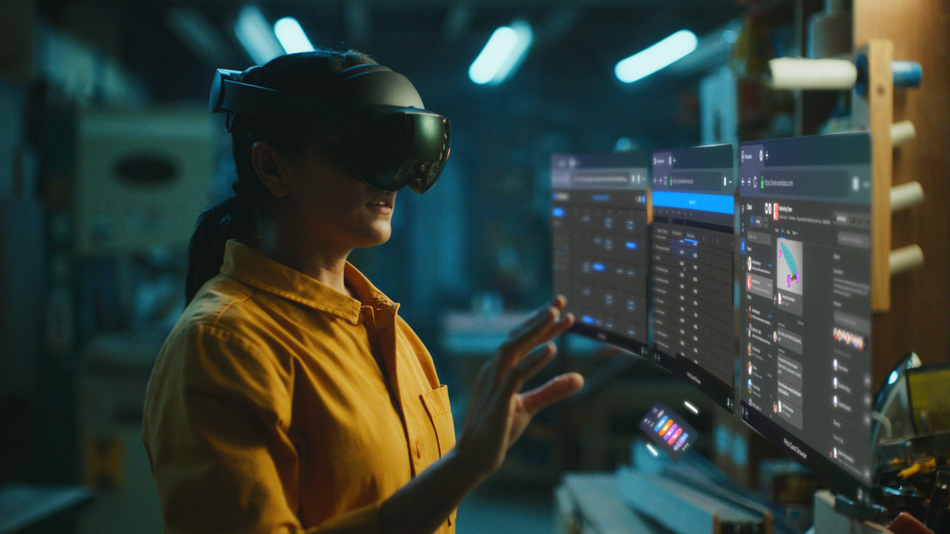The Impact of Industry 4.0 on Industrial Engineering Branches
Article #2 of Transforming Industrial Manufacturing with Industry 4.0 Series: The rapid evolution of the manufacturing industry through Industry 4.0 has expanded and evolved the roles of systems, processes, and design engineers in bringing new industrial engineering to life.
This is the second article in a 7-part series featuring articles on Transforming Industrial Manufacturing with Industry 4.0. The series looks at technological developments and emerging trends in the manufacturing industry that drive growth and innovation. This series is sponsored by Mouser Electronics. Through their sponsorship, Mouser Electronics shares its passion and support for engineering advancements that enable a smarter, cleaner, safer manufacturing future.
As problem-solvers, engineers combine practical knowledge of science and mathematics to drive creativity and innovation for society’s benefit. Engineering is a broad and diverse field, and the emergence of Industry 4.0 —the combination of the Industrial Internet of Things (IIoT), automation, robotics, and additive manufacturing —is having a significant impact on the branches of industrial engineering, including systems, process, and design engineering. That impact ranges from how products are designed for manufacturing in smart factories to redesigning the factory operations and manufacturing processes themselves.
The following article examines the roles of systems, process, and design engineers within the design chain of bringing new industrial automation products and projects to fruition and how those roles are expanding and evolving because of Industry 4.0.
Customized Engineering
Traditional manufacturing methods are optimized for mass production. Industry 4.0 factories are designed to support flexible manufacturing and mass customization. Mass customization and the delivery of more personalized products drive higher brand loyalties and increase business success. The various branches of industrial engineering are essential to developing the innovations needed to support Industry 4.0.
Coming out of universities, new engineering graduates all have fairly similar backgrounds with a carefully regulated set of required classes and only a few electives to explore their interests. Once they take that first step into the career of their choice, these engineers will embark on a wide variety of design roles, each requiring different elements from their education and different capabilities from the individual.
The Development of Systems of Systems
The emergence of cyber-physical systems (CPS) and systems of systems (SoS) are two defining characteristics of Industry 4.0. CPS support increased human-machine collaboration with ubiquitous wireless connectivity that integrates computational and physical assets from the factory to the cloud. CPS have a disruptive impact on the branches of industrial automation and are enabling the SoS development.
An SoS is a group of systems that work together to enable a new and more complex system that supports greater capability and performance than simply the sum of the constituent systems. SoS is an emerging field in Industry 4.0, and systems engineers and researchers are still developing quantitative analysis tools to optimize SoS.
Systems Engineering for Industry 4.0
The term systems engineering was first used during Industry 2.0 at Bell Telephone Laboratories in the early 1940s.[1] Systems engineering was developed as a holistic approach to engineering that emphasized the importance of considering the entire system as a whole rather than focusing solely on individual components. This approach involves analyzing the interactions between different parts of a system and identifying how changes in one component can affect other parts of the system.
Systems engineering consists of five phases, and while systems have become increasingly complex with Industry 4.0, the basic phases remain the same:
Preliminary system studies and program planning.
Exploratory planning, which includes selecting objectives, preliminary systems synthesis, and analysis, beginning to identify the preferred system solution.
Development planning, which includes refining the objectives, refining the systems synthesis and analysis, and identifying a final system solution.
Development implementation, which includes the development of system elements and components and the integration and testing of these parts.
Concurrent engineering is a continuous process taking place while the system is operational and being refined and updated.
Systems engineering is a multidisciplinary field. A system typically includes hardware, software, equipment, facilities, personnel, processes, and procedures needed to accomplish a given task or set of tasks. The primary purpose of systems engineering is to organize information and knowledge to assist those who manage, direct, and control the planning, development, production, and operation of systems.
SoS engineering takes the systems engineering process further and focuses on planning, analyzing, organizing, and integrating the capabilities of multiple systems. The use of the IIoT and cloud computing can support integrating multiple systems into SoS. The collaborative yet autonomous systems can deliver greater capabilities than the sum of the capabilities of the individual constituent systems. Increasing the complexities that systems engineers must deal with when considering SoS implementations, the mix of systems can evolve and include yet-to-be-designed systems or capabilities and technologies.
The emergence of Industry 4.0, CPS, and SoS has increased the complexity of the challenges faced by systems engineers. Among these challenges are:
Digital control and optimization of customized production
Increasingly flexible and adaptive automation
Growing human-machine interaction
Artificial intelligence (AI) and machine learning (ML) from the edge to the cloud
The new generation of system engineers has developed skills for mining and analyzing data. Configuring how that information is captured is paramount. Increasingly, that data is captured by embedding an intelligent edge or gateway that seamlessly collects the correct data from the factory floor. That calls for the combined skills of process engineering to identify meaningful and valuable data and design engineers to develop equipment and devices capable of capturing and reporting data in real time.
Process Engineering
Traditionally, process engineers are responsible for designing, implementing, and optimizing chemical and biochemical processes, especially continuous ones within the chemical, petrochemical, agriculture, mineral processing, food, pharmaceutical, and biotechnological industries. With the developments of Industry 4.0, that definition has expanded to include the processes needed to support mass customization of all types of products.
At all levels, process engineers use sophisticated software that collects, transfers, and processes sensor data to monitor production processes and identify inefficiencies in specific processes and machines in need of preventative maintenance. Adding AI and ML results in data-driven and self-optimizing operations in real time.
Many factories include a mix of equipment, including legacy machines without intelligent controls, sensors, or communications, and new systems optimized for Industry 4.0. This can result in production islands in which parts produced by one set of machines go to another for the next step in the production process. Still, the various islands are not connected, and data from the first production island does not follow the part of the next island. This is another place where IIoT can be leveraged. Using wireless sensors and IIoT, process engineers can connect previously isolated production islands and significantly improve the factory's operation.
To achieve maximum benefits, process engineers analyze each process to determine the leanest approach to provide a flow of meaningful data between the islands and a central monitoring and control platform. Process engineers are empowered to implement continuous improvement programs throughout the factory with the proper sensors and interconnects.
Additive manufacturing is another powerful tool that process engineers can leverage in Industry 4.0. It can produce structures with internal lattices for lightweight parts with increased structural strength. Using additive manufacturing, process engineers can design systems to customize personalized components such as medical devices and implants that are fitted to individual patients. The technology is also being leveraged in various market segments, from consumer devices to defense and aerospace systems. Effectively developing additive manufacturing processes requires a close partnership between process engineers and design engineers. Design-engineering tools for additive manufacturing are increasingly sophisticated, enabling component consolidation, product simplification, and generating complex internal structures.
Design Engineering 4.0
The tools that design engineers have available to them in Industry 4.0 have advanced. New computational modeling techniques, such as digital twins and virtual reality, are emerging. Together with the development of additive manufacturing, these new modeling techniques support the development of complex shapes and lightweight and strong internal structures.
Conventional computer-aided design (CAD) tools do not help model highly complex surfaces, shapes, and interior structures. New design platforms appear to create and validate thousands of options in real-time, identify the design with the best cost/performance tradeoff, and deliver the design files ready for use by automated additive manufacturing work cells.
Digital Twin technology is the most advanced of the new computational modeling tools that design engineers can use. A Digital Twin is a digital representation of all the aspects of a physical object, including its geometry, various constraints, performance capabilities, manufacturing parameters, and so on. These Digital Twins can be individual components or complete assemblies whose design and production needs can be optimized simultaneously.
Using these virtual design tools, engineering teams can collaborate from different locations in real time throughout the design process. Because Digital Twins is based on complete multi-physics modeling, they are robust and optimized for specific manufacturing process capabilities. The use of Digital Twins also supports rapid innovation and shorter product development timelines.
Virtual reality (VR) is also expanding the tools available to design engineers. VR can be used to produce a virtual prototype. Using VR to supplement or even replace traditional CAD tools can accelerate and enhance innovation, speed the identification of operational obstacles and refinement of features, and support collaboration between a range of specialists in real-time. Designing products suited to mass customization requires that product design and simulation of manufacturing processes occur interactively, and that demands the real-time interaction of teams of specialists.
Design engineers have always operated as part of a team with other engineers and designers, including process engineers, test engineers, project engineers, marketing specialists, industrial designers, etc. The development of virtual environments and tools will increase opportunities for collaboration.
A trend in Industry 4.0 design engineering considers energy efficiency and energy savings issues on a more holistic basis. Expanding on the concept of energy efficiency, the new focus is developing methodologies that can quantify energy consumption throughout the entire product lifecycle chain, including obtaining the materials, manufacturing the product, and even recycling or disposing of the product when its useful life is over.
Conclusion
Industry 4.0 is having an enormous impact on all branches of industrial automation. It is changing the systems, processes, and products that are being designed to support mass customization. It is changing the tools available to engineers and the interactions that engineers have with other members of the design teams. It also is changing how products are defined to include comprehensive measures of energy consumption and energy efficiency for manufacturing processes, product operation, and use.
This article is based on: Industry 4.0's Impact on Industrial Automation Branches, a blog by Mouser Electronics. It has been substantially edited by the Wevolver team and Electrical Engineer Ravi Y Rao. It's the second article from the Transforming Industrial Manufacturing with Industry 4.0 Series. Future articles will introduce readers to some more trends and technologies transforming industrial automation.
The introductory article presented the different topics covered in the Transforming Industrial Manufacturing with Industry 4.0 Series.
The first article discusses Sensor Fusion, PLCs, Low-Power Components, and Vision Systems and their impact on the progression of Manufacturing 4.0.
The second article examines the expanding and evolving roles of systems, process, and design engineers within the design chain of bringing new industrial automation products to fruition.
The third article takes a look at the development of smart factories, their characteristics, benefits, and challenges that need to be addressed for a successful digital transformation.
The fourth article focuses on technologies like Robot Operating Systems, edge computing, and new software solutions that are improving robotics in industrial and commercial environments.
The fifth article explores some challenges in accessing information in the manufacturing sector and how AI-driven AR has the potential to overcome them.
The sixth article explains how digital twins are helping bridge the gap between design and manufacturing.
The seventh article how manufacturing environments are adapting to the evolving customer needs and expectations.
About the sponsor: Mouser Electronics
Mouser Electronics is a worldwide leading authorized distributor of semiconductors and electronic components for over 1,200 manufacturer brands. They specialize in the rapid introduction of new products and technologies for design engineers and buyers. Their extensive product offering includes semiconductors, interconnects, passives, and electromechanical components.
References
[1] OME753 /System Engineering Units - I notes - Computer Science and Engineering (CS8493), Anna University, [Online], Available from: https://www.studocu.com/in/document/anna-university/computer-science-and-engineering/introduction-about-system-engineering/38541205





